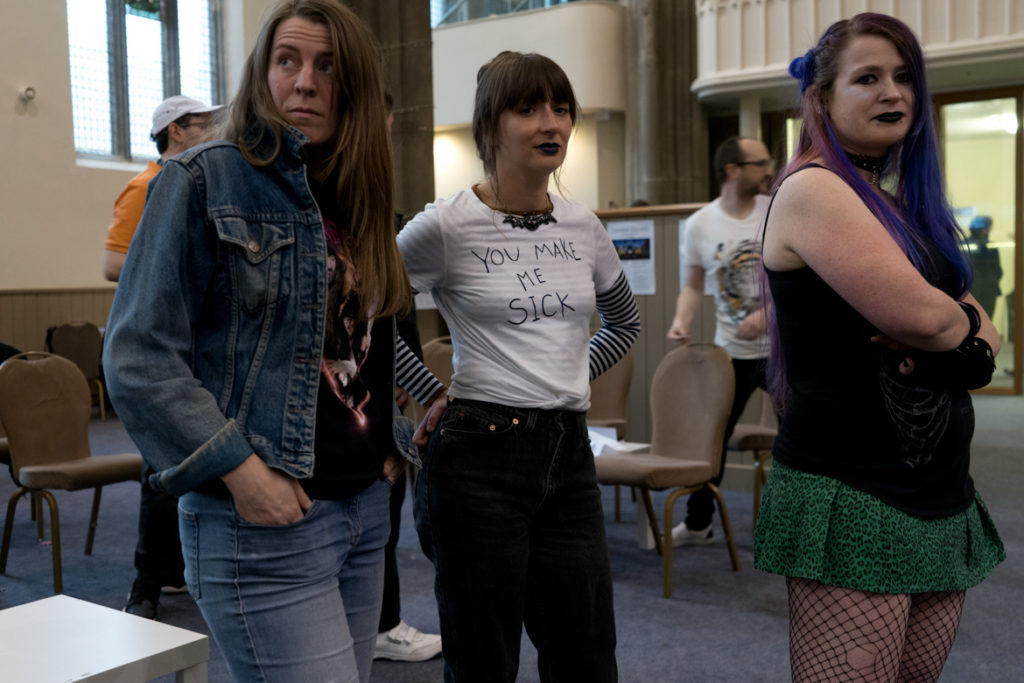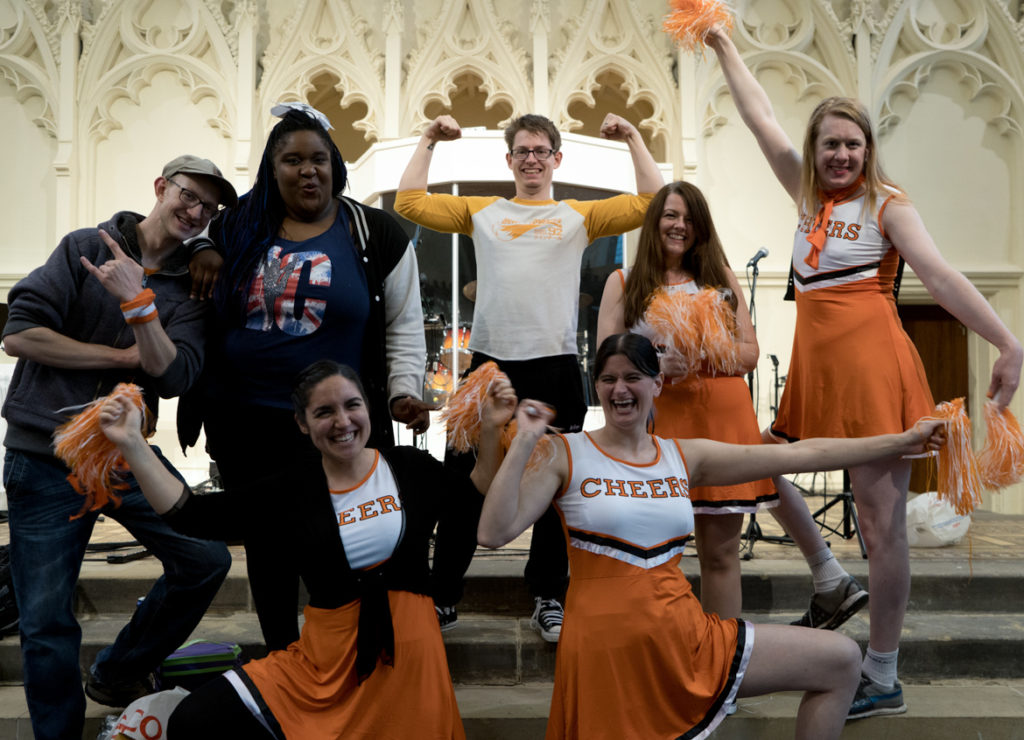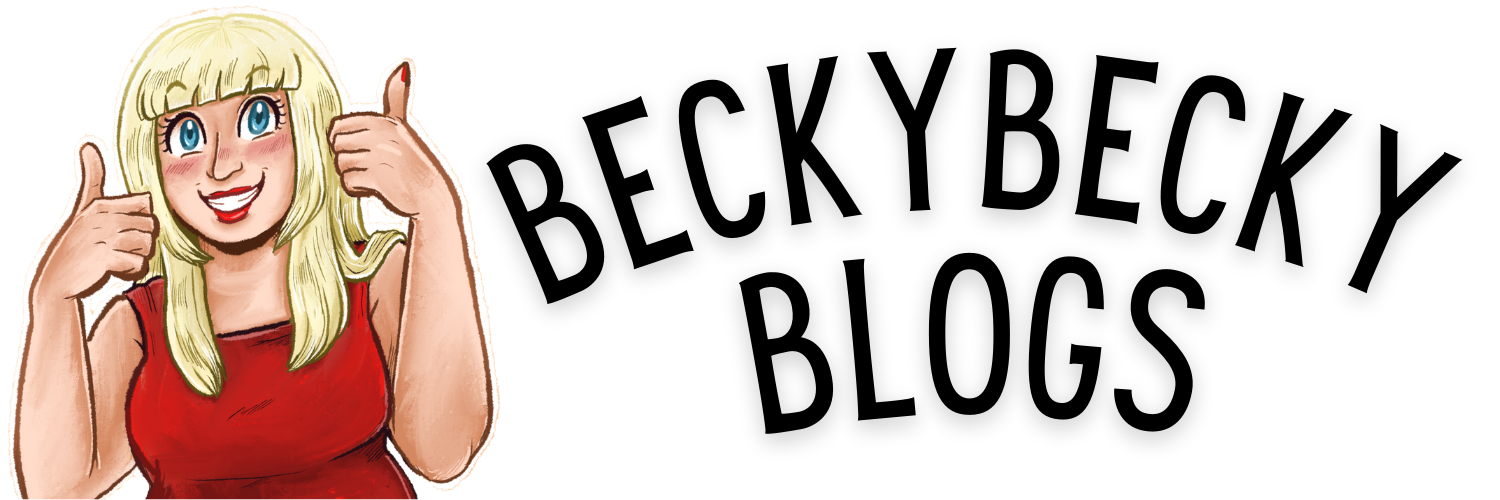Casting is a crucial part of preparing for your megagame. A well-cast game can elevate your mechanics and briefings to another level, while poor casting choices can cast a pall over the entire day for multiple participants.
However, it is also notoriously difficult to do perfectly. A huge number of factors go into it, which means it’s challenging even for experienced designers.
In this blog I’ll be looking at a few of the different options for casting your megagame, and making some suggestions to make sure you end up with a great cast list.
Who does casting?
There are generally two camps of thought here: either the designer/game runner does the casting, or players cast themselves. In the UK, you will usually see games cast by the designer, although not exclusively.
In designer-side casting (which I’ll call DSC from now on), players will usually express a preference for the role they wish to play, however they are not guaranteed to receive a particular role. Approximately 2-6 weeks before the game, the designer will assign players to roles and release a cast list.
For player-side casting (PSC), players will select the role they wish to play themselves, usually at the time when they book their spot on the game.
Pros and cons
I have always used DSC for my games, and generally I think it is the better option. However, there are a number of issues that arise from either kind of casting.
Role knowledge vs player knowledge
Knowledge about the roles within a game, including what sort of player would do well in those roles, resides within the designer. While it’s possible for the designer to create a briefing document that explains the roles and describes ideal players for each, this has a key downside: if there is any secret or more subtle information, they might not want to share it with all players. For example, they’re unlikely to want to advertise a role as the “team traitor”.
On the other hand, the information that the designer lacks is knowledge about each player who has signed up. While they can (and should) use casting questionnaires to get more of this information, the information they get from players will be imperfect. However on balance, it’s easier and more likely for the designer to understand 80% of what each player wants from a role, than for each player to understand 80% of the intricacies of the game and its dynamics.
Game balance
For PSC, it’s entirely possible for one team to end up stuffed with experienced players, while other teams are all newbies, which can put the newer players at a disadvantage.
There are implications if games don’t fill completely – if, for example, a player needs to be removed from each team, those players will need to be slotted back in, and won’t end up with the choice other players got when they signed up. This can lead to disappointment or resentment, or players in less-than-optimal roles.
You are also likely to see popular roles being filled more quickly than less popular roles, which means that later signups have a more limited list of options. This can lead to a slow-down of sign ups if the roles still available are less attractive to players for some reason. And if there are only single roles left on a few teams, it can put players off signing up if they want to play with at least one other friend.
Bias
One of the main criticisms of DSC is that bias is going to show up. It’s not just that designers may give primo roles to their friends. It’s also that they will generally give more nuanced roles to players they are familiar with, such as ones they have played on a team with in the past. This generally is just because they have an idea of how that player will do in the role, rather than intentional favouritism. But it may disadvantage players who simply haven’t interacted with the designer at a game before.
Time and effort
Asking players to cast themselves is definitely the quicker and easier option, in that it offloads that task from the designer’s to-do list. Having said that, casting is one of my favourite parts of putting on a game, so it’s not a job I’d be excited to get rid of.
Casting questionnaires
If you choose to do the casting yourself as a designer, this is an essential part of the casting process, and I’m honestly surprised that they’re not more common.
As mentioned in my Megagame Suggestions blog post, here are some good questions to include:
- How many megagames have you played before? This is useful to ensure you don’t have a team of all newbies and the experienced players are distributed throughout game.
- Do you prefer mechanics or roleplay roles? I tend to do this as a five-point scale, containing “just mechanics”, “more mechanics than roleplay”, “equal”, “more roleplay than mechanics”, “just roleplay”.
- Do you prefer to play antagonistically or cooperatively? This helps you cast important roles such as a team traitor, or a deputy who must remain loyal.
- What is your preferred character gender? The relevance of this often depends on the game – for example, a historical game may feature male primogeniture that restricts the actions of female roles. It’s a good idea to be upfront about these sorts of restrictions. Games which don’t include character gender can skip this question entirely.
- Please list up to two other players you would like to interact with during the game. You will usually use this to cast newer players in the same team as at least one or two of their friends, and with more experienced players you can consider how to cast people in interesting dynamics.
- Is there anyone you would prefer not to interact with? This can be a useful way of minimising interpersonal issues on the day.
- How can we make the game more accessible for you? Accessibility can be a challenge to manage at megagames, so asking outright is the best plan. It’s often a good idea to include known accessibility issues (e.g. no step-free access) upfront.
- Do you have any specific role preferences? This is the one question that usually makes it onto sign up forms, and it’s useful to include. Maybe someone will tell you they’d love to play press or they really don’t fancy one particular team.
There are almost certainly other questions, including ones that are tailored to your specific game. For example, for Trope High the various clique mini-games required certain skills, so it was important that, for example, someone who without good hand-eye-coordination didn’t end up on the Sportball team, so I included a “what clique do you want to be in” question.
Many game signup forms include a free text box where they ask for general role preferences, but I find that a comprehensive questionnaire makes it easier for the designer to cast effectively, and makes it more likely that players will end up in roles they enjoy and can succeed in.

My casting process
I’ll walk you through the process I use for casting. This is designer-side casting based on a fairly comprehensive casting questionnaire. To cast, I use a Excel and make lots of use of features such as pivot tables and VLOOKUP, which makes it easier and quicker, but you don’t need this sort of technical knowledge to cast well.
Step 1 – group players by friend requests
For all players who have requested to be teamed with specific other players, or who have had that request made about them, I group them up. Often you end up with a few massive groups despite asking people to name up to two people, because they don’t coordinate and the groups overlap. I know in the back of my mind that I’ll be breaking down these larger groups, but that can be done later subject to other preferences.
Step 2 – cast the key roles
Most games have at least a couple of roles that need to have fairly experienced people in them. I usually cast these roles first, and yes they usually go to people that I know personally can handle those roles. For example, these would be the Teachers in Trope High, or roles such as Tywin Lannister or Rhaenyra Targaryen in Everybody Dies.
Step 3 – look at the picky people
Various people in the sign-up list will have asked for very specific roles. While these can’t always be accommodated, I do take a look at them early on, and try to make it work if I can. This would include looking at any major accessibility requests, great desires for particular characters (especially non-contested requests) and also requests to be cast away from certain players.
Step 4 – slot in the big groups
I handle groups in a few different ways. For groups that would take up an entire team, provided they’re not all either super experienced or brand new, I tend to allow that. I try to make sure that teams aren’t all-friends-except-one, and if need be I’ll split groups up into twos and threes to fit them together. I tend to be more vague with experienced players, such as by putting them in roles that will interact with the people they’ve asked to play with, rather than necessarily on the same team.
Step 5 – fill in the gaps
By this point I’m normally about two-thirds cast, and then the hard work begins – slotting in the people who haven’t made a clear request, or the ones where I can’t quite give them what they want. This often leads to me making a few different variations on the cast list until I’m finally happy with it. Sometimes I will start doing this before I’ve slotted in all the groups, just to give me some flexibility.
Step 6 – check it over
Then, finally, I go back over every single person and look at what they asked for and what they got. Is anything completely contrary to what they’ve asked for? Should I reach out and clarify something they’ve said? Do I feel like people will be happy with what they’ve got? Have I made any glaring oversights, such as all the team leads being men?
Step 7 – get another pair of eyes
Technically I’m doing this throughout, as I always do my casting with Tim’s help. But for those of you casting solo, definitely get someone else to check it over before publishing it. They might spot things that you haven’t.
Releasing the cast list
I love releasing the cast list! Seeing all the players buzzing about their allocation and getting hyped for the game is always an exciting moment.
I’d recommend doing this as early as is practical. Players love to get into character, and you’re also more likely to see costumes if you give players plenty of time to source them. Even if you can’t release specific roles early, it’s good to give info about their team allocations, as then they’re know who they’re playing with and may be able to get more general costumes.
Due to GDPR concerns, many groups are moving away from releasing cast lists publicly on their website. It is still allowable to make this information publicly available, provided you inform attendees that you will be doing so – and it might be a good idea to ask them for a display name to publish, in case they would rather use a pseudonym for any reason.
Alternatively, you can release the cast list on a private attendees-only section of the website, or send it out as a PDF. If you have the technical capability to do it on a attendees-only section, this is a great option. If you’re going for PDF, remember that this is a static document and that it might be a good idea to send out a final cast list a day or two before the event or provide printed copies on the day, as players do sometimes use this during game play.

Changes to the cast list
It may be necessary for you to make changes to the cast list after publishing it, for example, if a player isn’t happy with their role allocation, or if someone in a crucial role drops out.
If you need to change a player’s role when they haven’t requested this, it’s best to be as open and flexible as possible. For example, a player may have purchased a specific costume or gotten attached to their role already, and may be upset or apprehensive about changing. That’s not to say that you can’t be firm if it needs to happen, but you’ll get a lot further if you are aware that they might have strong feelings about it. On the other hand, they might be absolutely fine with it!
For dropouts, especially last minute ones, it is helpful to create a waiting list of backup players. It might be worthwhile letting them know that they won’t have much choice in terms of role. As it gets close to the event day itself, you could even reach out to your waiting list to see what sort of notice they’d need to come to the game – I’ve managed to fill spaces on the game day itself because of this sort of prep work!
Avoiding discrimination
It’s essential that, when casting your game, you take every effort to avoid discrimination. For example, have you cast all of the women attending your game into certain game roles, such as diplomats or female characters? Are there roles without any women in, such as team leads or map players? If so, why? Did they ask to be in those sorts of roles, or did you make some assumptions?
For players with accessibility requirements, did you ensure that you placed them in roles where those accessibility needs would be met? Did you place them into the roles that would be easiest to make accessible, without considering the rest of their preferences?
It’s natural to have some unconscious biases, but to nurture a diverse and welcoming megagame environment, the onus is on designers to overcome their biases and make careful considered choices when casting their games. This is another place where casting questionnaires come in handy, because it is a lot easier to avoid generalisations by asking players exactly what they want. Remember – it is always okay to give a player the role that they ask for, even if this results in up with a skewed-looking cast list.
Casting your Control
Just a short note on casting Control, another crucial element of your game planning. All of the above also applies to your Control, although it can be done in a more informal way. It’s good to get an idea of what sort of Control role each person would prefer (e.g. roleplay focused or mechanics focused), how experienced they are as a Control, and whether they feel they will need support if they’re not very experienced.
Different people will need different sorts of support – one person may be absolutely fine stepping into a mechanics focused Control role even for their first time Controlling, while another would prefer to be an assisting a more experienced Control.
It is also a good idea to communicate their Control allocations ahead of the game, in plenty of time for them to focus their game prep on the specific aspects of the game that they will be in charge of.
Go forth and cast!
I’m obviously a strong advocate of designer-side casting – it gives you a lot more control over the outcome of your game, and it’s a really fun part of the process. But a casting questionnaire is pretty essential in making sure that you get as much information as possible about your players, hopefully resulting in the best possible cast list.
Have fun casting your megagame – and let me know of any tips you have to share!
Others in the “How to Write a Megagame” series
Part 1: Choosing Your Concept
Part 2: Logistics
Part 3: Scoping
Part 4: Mechanics
Part 5: Briefings
Part 6: Secret Plots
Part 7: Casting
Part 8: Teams
Part 9: Control and Facilitators
Part 10: Venues (coming soon)
